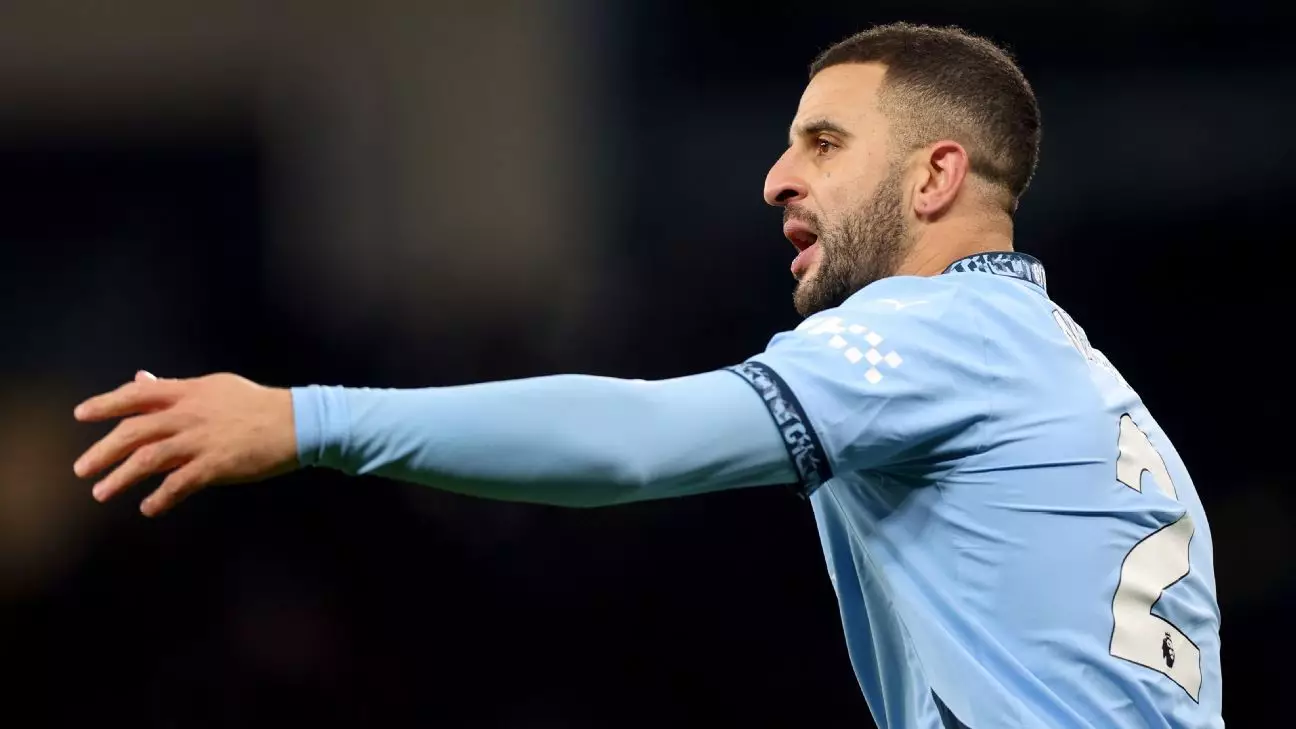As one of the Premier League’s experienced defenders, Kyle Walker has become a focal point in the ongoing transfer saga that surrounds top football clubs. With reports indicating that the right-back is keen on leaving Manchester City, the football world is abuzz with speculation about his next move. Pep Guardiola’s recent confirmation that Walker has requested a transfer sheds light on the player’s aspirations, particularly with AC Milan reportedly keen to solidify their back line by securing his services.
Since joining City in 2017, Walker has played an instrumental role in the club’s rise to dominance, securing numerous titles along the way. However, at 34 years old, Walker faces the dilemma of balancing his career ambitions with the realities of being sidelined by a team looking to rejuvenate its roster. The recent disappearance from the squad in their emphatic 8-0 victory over Salford City raises questions about his immediate future at the Etihad Stadium, especially as various clubs, including MLS franchises and challengers in the Saudi Pro League, are rumored to be interested.
While Walker’s contract runs until 2026, which normally would give the club leverage, his desire to leave may complicate matters. His previous near-move to Bayern Munich serves as a reminder of how quickly situations can evolve in professional football. It will be essential for City to navigate this carefully, as his departure, especially to a rival, could spark significant implications for both parties.
In stark contrast to Walker’s uncertain future, Khvicha Kvaratskhelia’s anticipated move to Paris Saint-Germain is shaping up to be one of the most exciting transfers of the window. The 23-year-old Georgian sensation is on the cusp of joining the French giants, reportedly having agreed on terms for a lucrative five-year contract. The impending meeting between PSG and Napoli is a crucial next step, as the two clubs work to finalize the details of the transfer.
Kvaratskhelia’s performance at Napoli has captured the attention of several elite clubs, but PSG appears poised to outmaneuver competition from giants like Liverpool and Chelsea. If finalized, this move could significantly enhance Kvaratskhelia’s earnings, perhaps four to five times his current salary at Napoli, reflecting both his talent and PSG’s financial muscle. The transfer also embodies a broader trend within football, where younger players seek out opportunities in clubs that promise competitive wages and the chance at silverware.
In context, Kvaratskhelia’s move underlines a shift in league dynamics, with Ligue 1 becoming increasingly appealing to emerging talents from around Europe.
Beyond the high-profile names in the transfer market, clubs are also focusing on younger prospects capable of making an immediate impact. Liverpool’s interest in Slavia Prague’s 20-year-old left-back El Hadji Malick Diouf exemplifies this strategy. With standout performances in the UEFA Europa League, Diouf has emerged as a sought-after player, and Liverpool’s proactive approach demonstrates their ambition to ensure long-term competitiveness, especially as they prepare for potential transitions within their squad.
However, they are not alone in their pursuit; clubs such as Crystal Palace have already lined up to challenge for Diouf’s signature. Campbell faring well in negotiations will be crucial, especially considering Diouf’s valuation at approximately €25 million—a significant investment for any club, particularly in a landscape fragile from economic strains following the pandemic.
Max Aarons is another notable name making headlines, with a potential loan move to Valencia that could pave the way for a permanent deal next summer. Having seen limited action this season with AFC Bournemouth, a departure could benefit both the player and club, providing Aarons with valuable playing time in La Liga while allowing Bournemouth to explore other options.
Similarly, AC Milan continues to bolster their squad, now eyeing Lucas Gourna-Douath from RB Salzburg. The midfielder’s potential signing highlights Milan’s commitment to strengthening their team in response to injuries, showcasing the ever-present need for clubs to adapt quickly to challenges and seize opportunities in a rapidly evolving football market.
With the transfer window still open, clubs across leagues are actively navigating negotiations and scouting emerging talents, underscoring the ever-dynamic landscape of global football. Each decision made now has the potential to shape the upcoming season and beyond, signifying just how critical the winter transfer window is in refining a team’s ambitions for immediate success.

